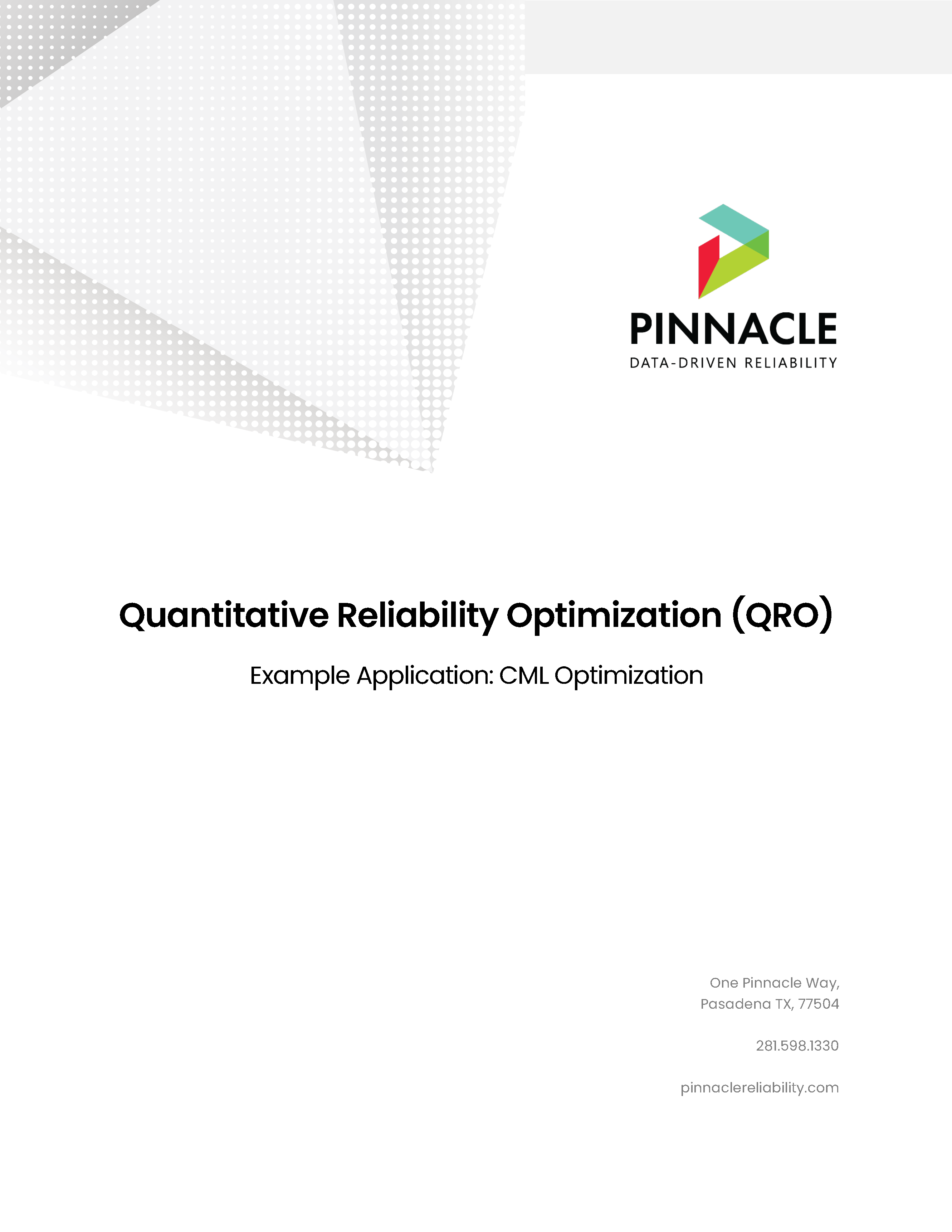
Quantitative Reliability Optimization (QRO) Example Application: CML Optimization
How do you know which Condition Monitoring Locations (CMLs) add value to your facility? When many existing CMLs were initially placed more than 30 years ago, the industry knew very little about the nature of degradation, and there was no historical data to indicate the areas with the highest or most inconsistent corrosion. As technology has evolved and additional historical data has become more available, it’s apparent that many of these CMLs were not placed in the most strategic locations.
Facilities have an opportunity to optimize their inspection programs. However, despite the plethora of data available today, many facilities cannot calculate the value of individual CMLs and need help identifying the specific CMLs that should be added or removed to achieve the optimal balance of inspection spending while ensuring adequate coverage.
Among the many approaches developed to identify and place CMLs, Quantitative Reliability Optimization (QRO) is the only approach that quantifies uncertainty and uses it as a basis for the probability of failure. When applied to CML Optimization, QRO quantifies the impact of specific tasks on an asset’s POF to determine where inspections are the most effective in reducing uncertainty. As a result, facilities can confidently identify and remove inspections with little to no value, which is not achievable with current RBI approaches.
This analysis, which can be done through Newton™, enables facilities to calculate risk more effectively, eliminate inspections that do not add value, and ultimately, optimize risk management strategies.
Stay in the know.
Providing data-driven insights, perspectives, and industrial inspiration from the forefront of the reliability transformation.